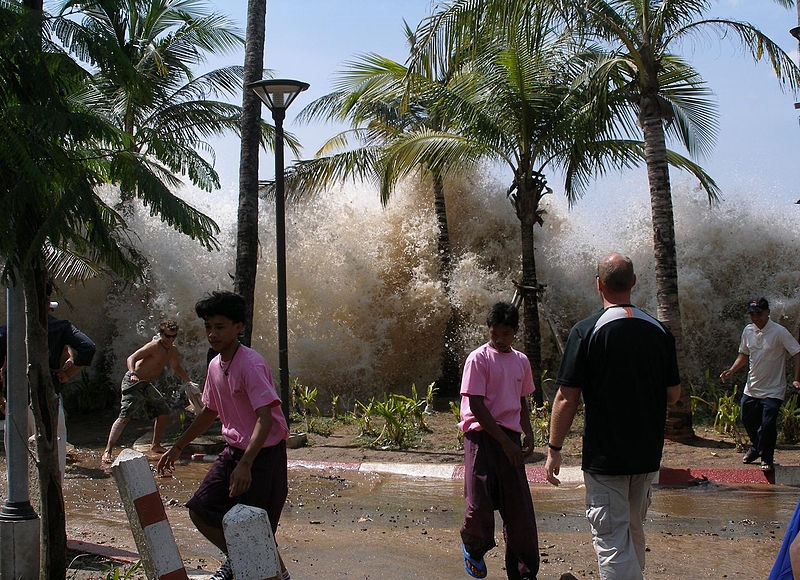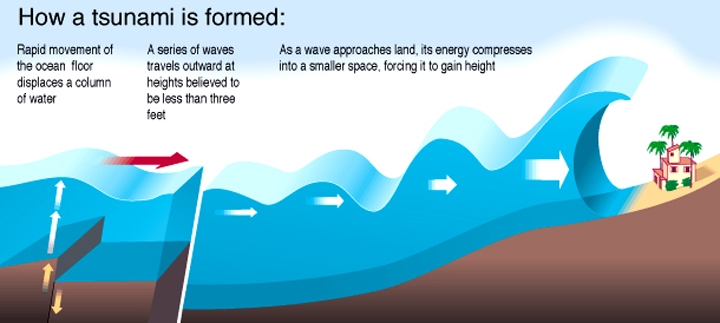You can contact LEARNZ, part of CORE Education, at:
Postal Address:
PO Box 13 678,
Christchurch 8141,
New Zealand
A tsunami is a series of waves in the sea caused by a movement on the sea floor. New Zealand is at risk from tsunami because it has a long coastline and earthquakes and volcanoes are common.
The most common cause of tsunami are earthquakes that move the sea floor. Other causes include;
Sudden changes to the seafloor raises the water level above and causes the sea to flow away from the movement, creating waves.
In the open ocean, tsunami waves travel at 600 to 700 kilometres per hour (kph). In the deep ocean, waves from a large tsunami may be as little as 60cm high. They pass ships unnoticed. As they reach shallow water, they slow down to about 30kph and gain height.
In low-lying coastal areas waves can travel a long way inland.
The seawater may recede a long way out, sometimes hundreds of metres, before returning as a tsunami. Tsunamis are not just moving lumps on top of the ocean surface, they also include hollows. Sometimes the hollow reaches the coast first. When this happens, the ocean first draws down and sucks water away from the beach. It then rushes back in with great speed and force as the lumps arrive. People who notice the receding water have as little as five minutes to get inland to higher ground. Other signs of a tsunami are a sudden rise or fall in sea level and hearing loud and unusual noises from the sea.
A tsunami is not just seawater. It picks up a huge amount of debris which makes it more damaging. People die not only from drowning; many are killed being hit by debris and heavy objects in the wave. A retreating tsunami wave can cause as much damage as the first forward surge. A big tsunami can damage modern, strong buildings.
No. A tsunami is not really a wave, it is a surge of water that moves inland with great power - much more power than a surfer can handle. Besides, the waves do not stop at the shore, so surfers may find that they crash into buildings or other debris caught up in the water.
Usually, a tsunami is made up of a series of surges and equally strong return flow to the sea. The first wave of a tsunami is not always the biggest. Much later waves may be bigger. Time between waves can vary. It may be just minutes, or more than an hour.

,The 2004 Indian Oean tsunami hitting Ao Nang in Thailand. Can you find out how large the earthquake was that generated this tsunami? Image: Public Domain.

,A tsunami is formed by rapid movement of the ocean floor, often caused by an earthquake. A series of waves travel outwards from this movement. Why do the waves increase in height as they move close to land? Image: Steven Stankiewicz.

Signs like these tell people where to go to escape a tsunami. Where might you find these signs in New Zealand? Image: LEARNZ.
Find out which areas of New Zealand are at most risk from tsunami.